Xiaohan Li
University of Science and Technology of China
Kling-Avatar: Grounding Multimodal Instructions for Cascaded Long-Duration Avatar Animation Synthesis
Sep 11, 2025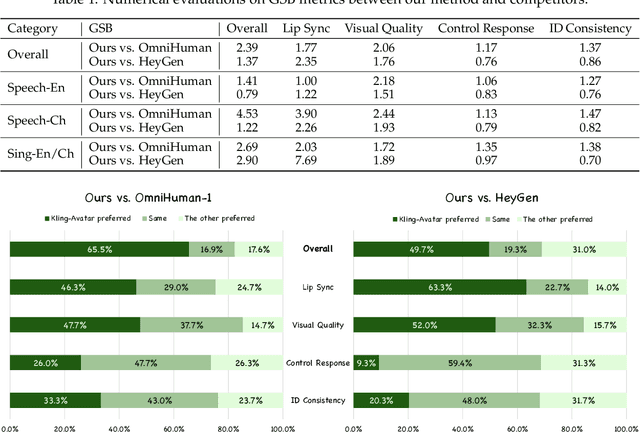



Abstract:Recent advances in audio-driven avatar video generation have significantly enhanced audio-visual realism. However, existing methods treat instruction conditioning merely as low-level tracking driven by acoustic or visual cues, without modeling the communicative purpose conveyed by the instructions. This limitation compromises their narrative coherence and character expressiveness. To bridge this gap, we introduce Kling-Avatar, a novel cascaded framework that unifies multimodal instruction understanding with photorealistic portrait generation. Our approach adopts a two-stage pipeline. In the first stage, we design a multimodal large language model (MLLM) director that produces a blueprint video conditioned on diverse instruction signals, thereby governing high-level semantics such as character motion and emotions. In the second stage, guided by blueprint keyframes, we generate multiple sub-clips in parallel using a first-last frame strategy. This global-to-local framework preserves fine-grained details while faithfully encoding the high-level intent behind multimodal instructions. Our parallel architecture also enables fast and stable generation of long-duration videos, making it suitable for real-world applications such as digital human livestreaming and vlogging. To comprehensively evaluate our method, we construct a benchmark of 375 curated samples covering diverse instructions and challenging scenarios. Extensive experiments demonstrate that Kling-Avatar is capable of generating vivid, fluent, long-duration videos at up to 1080p and 48 fps, achieving superior performance in lip synchronization accuracy, emotion and dynamic expressiveness, instruction controllability, identity preservation, and cross-domain generalization. These results establish Kling-Avatar as a new benchmark for semantically grounded, high-fidelity audio-driven avatar synthesis.
MIDAS: Multimodal Interactive Digital-humAn Synthesis via Real-time Autoregressive Video Generation
Aug 28, 2025Abstract:Recently, interactive digital human video generation has attracted widespread attention and achieved remarkable progress. However, building such a practical system that can interact with diverse input signals in real time remains challenging to existing methods, which often struggle with heavy computational cost and limited controllability. In this work, we introduce an autoregressive video generation framework that enables interactive multimodal control and low-latency extrapolation in a streaming manner. With minimal modifications to a standard large language model (LLM), our framework accepts multimodal condition encodings including audio, pose, and text, and outputs spatially and semantically coherent representations to guide the denoising process of a diffusion head. To support this, we construct a large-scale dialogue dataset of approximately 20,000 hours from multiple sources, providing rich conversational scenarios for training. We further introduce a deep compression autoencoder with up to 64$\times$ reduction ratio, which effectively alleviates the long-horizon inference burden of the autoregressive model. Extensive experiments on duplex conversation, multilingual human synthesis, and interactive world model highlight the advantages of our approach in low latency, high efficiency, and fine-grained multimodal controllability.
Stereo 3D Gaussian Splatting SLAM for Outdoor Urban Scenes
Jul 31, 2025Abstract:3D Gaussian Splatting (3DGS) has recently gained popularity in SLAM applications due to its fast rendering and high-fidelity representation. However, existing 3DGS-SLAM systems have predominantly focused on indoor environments and relied on active depth sensors, leaving a gap for large-scale outdoor applications. We present BGS-SLAM, the first binocular 3D Gaussian Splatting SLAM system designed for outdoor scenarios. Our approach uses only RGB stereo pairs without requiring LiDAR or active sensors. BGS-SLAM leverages depth estimates from pre-trained deep stereo networks to guide 3D Gaussian optimization with a multi-loss strategy enhancing both geometric consistency and visual quality. Experiments on multiple datasets demonstrate that BGS-SLAM achieves superior tracking accuracy and mapping performance compared to other 3DGS-based solutions in complex outdoor environments.
Ov3R: Open-Vocabulary Semantic 3D Reconstruction from RGB Videos
Jul 29, 2025


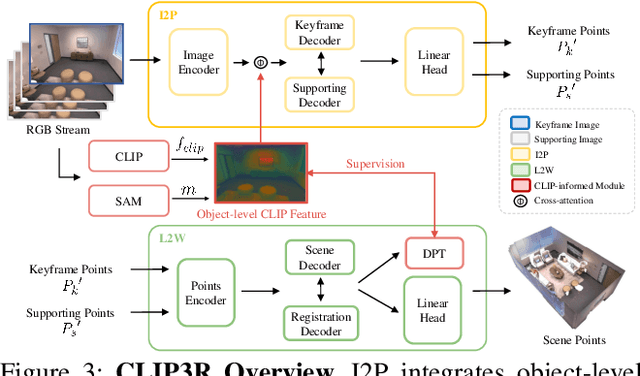
Abstract:We present Ov3R, a novel framework for open-vocabulary semantic 3D reconstruction from RGB video streams, designed to advance Spatial AI. The system features two key components: CLIP3R, a CLIP-informed 3D reconstruction module that predicts dense point maps from overlapping clips while embedding object-level semantics; and 2D-3D OVS, a 2D-3D open-vocabulary semantic module that lifts 2D features into 3D by learning fused descriptors integrating spatial, geometric, and semantic cues. Unlike prior methods, Ov3R incorporates CLIP semantics directly into the reconstruction process, enabling globally consistent geometry and fine-grained semantic alignment. Our framework achieves state-of-the-art performance in both dense 3D reconstruction and open-vocabulary 3D segmentation, marking a step forward toward real-time, semantics-aware Spatial AI.
Natural Language Generation in Healthcare: A Review of Methods and Applications
May 07, 2025Abstract:Natural language generation (NLG) is the key technology to achieve generative artificial intelligence (AI). With the breakthroughs in large language models (LLMs), NLG has been widely used in various medical applications, demonstrating the potential to enhance clinical workflows, support clinical decision-making, and improve clinical documentation. Heterogeneous and diverse medical data modalities, such as medical text, images, and knowledge bases, are utilized in NLG. Researchers have proposed many generative models and applied them in a number of healthcare applications. There is a need for a comprehensive review of NLG methods and applications in the medical domain. In this study, we systematically reviewed 113 scientific publications from a total of 3,988 NLG-related articles identified using a literature search, focusing on data modality, model architecture, clinical applications, and evaluation methods. Following PRISMA (Preferred Reporting Items for Systematic reviews and Meta-Analyses) guidelines, we categorize key methods, identify clinical applications, and assess their capabilities, limitations, and emerging challenges. This timely review covers the key NLG technologies and medical applications and provides valuable insights for future studies to leverage NLG to transform medical discovery and healthcare.
Bayesian Reasoning Enabled by Spin-Orbit Torque Magnetic Tunnel Junctions
Apr 11, 2025Abstract:Bayesian networks play an increasingly important role in data mining, inference, and reasoning with the rapid development of artificial intelligence. In this paper, we present proof-of-concept experiments demonstrating the use of spin-orbit torque magnetic tunnel junctions (SOT-MTJs) in Bayesian network reasoning. Not only can the target probability distribution function (PDF) of a Bayesian network be precisely formulated by a conditional probability table as usual but also quantitatively parameterized by a probabilistic forward propagating neuron network. Moreover, the parameters of the network can also approach the optimum through a simple point-by point training algorithm, by leveraging which we do not need to memorize all historical data nor statistically summarize conditional probabilities behind them, significantly improving storage efficiency and economizing data pretreatment. Furthermore, we developed a simple medical diagnostic system using the SOT-MTJ as a random number generator and sampler, showcasing the application of SOT-MTJ-based Bayesian reasoning. This SOT-MTJ-based Bayesian reasoning shows great promise in the field of artificial probabilistic neural network, broadening the scope of spintronic device applications and providing an efficient and low-storage solution for complex reasoning tasks.
DR-Encoder: Encode Low-rank Gradients with Random Prior for Large Language Models Differentially Privately
Dec 22, 2024



Abstract:The emergence of the Large Language Model (LLM) has shown their superiority in a wide range of disciplines, including language understanding and translation, relational logic reasoning, and even partial differential equations solving. The transformer is the pervasive backbone architecture for the foundation model construction. It is vital to research how to adjust the Transformer architecture to achieve an end-to-end privacy guarantee in LLM fine-tuning. In this paper, we investigate three potential information leakage during a federated fine-tuning procedure for LLM (FedLLM). Based on the potential information leakage, we provide an end-to-end privacy guarantee solution for FedLLM by inserting two-stage randomness. The first stage is to train a gradient auto-encoder with a Gaussian random prior based on the statistical information of the gradients generated by local clients. The second stage is to fine-tune the overall LLM with a differential privacy guarantee by adopting appropriate Gaussian noises. We show the efficiency and accuracy gains of our proposed method with several foundation models and two popular evaluation benchmarks. Furthermore, we present a comprehensive privacy analysis with Gaussian Differential Privacy (GDP) and Renyi Differential Privacy (RDP).
Improving Sequential Recommender Systems with Online and In-store User Behavior
Dec 03, 2024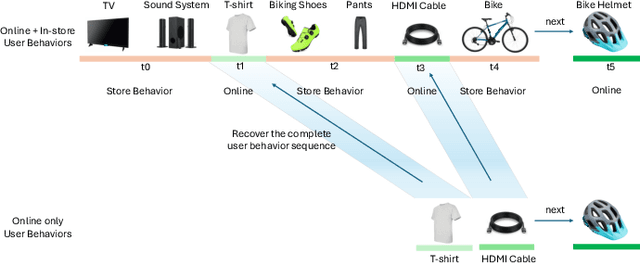
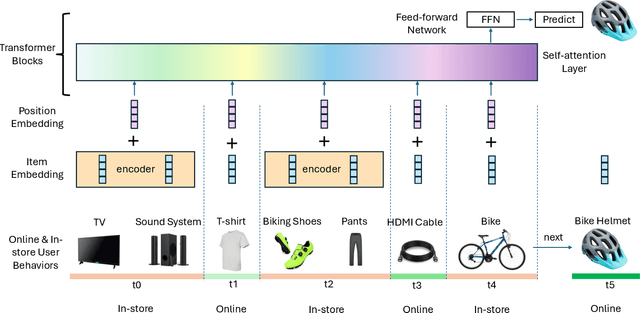
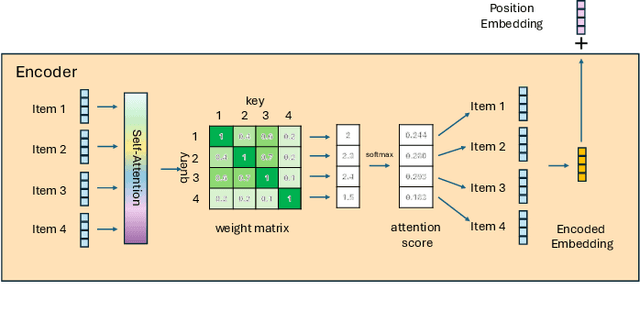

Abstract:Online e-commerce platforms have been extending in-store shopping, which allows users to keep the canonical online browsing and checkout experience while exploring in-store shopping. However, the growing transition between online and in-store becomes a challenge to sequential recommender systems for future online interaction prediction due to the lack of holistic modeling of hybrid user behaviors (online and in-store). The challenges are twofold. First, combining online and in-store user behavior data into a single data schema and supporting multiple stages in the model life cycle (pre-training, training, inference, etc.) organically needs a new data pipeline design. Second, online recommender systems, which solely rely on online user behavior sequences, must be redesigned to support online and in-store user data as input under the sequential modeling setting. To overcome the first challenge, we propose a hybrid, omnichannel data pipeline to compile online and in-store user behavior data by caching information from diverse data sources. Later, we introduce a model-agnostic encoder module to the sequential recommender system to interpret the user in-store transaction and augment the modeling capacity for better online interaction prediction given the hybrid user behavior.
RiTeK: A Dataset for Large Language Models Complex Reasoning over Textual Knowledge Graphs
Oct 17, 2024



Abstract:Answering complex real-world questions often requires accurate retrieval from textual knowledge graphs (TKGs). The scarcity of annotated data, along with intricate topological structures, makes this task particularly challenging. As the nature of relational path information could enhance the inference ability of Large Language Models (LLMs), efficiently retrieving more complex relational path information from TKGs presents another key challenge. To tackle these challenges, we first develop a Dataset for LLMs Complex Reasoning over Textual Knowledge Graphs (RiTeK) with a broad topological structure coverage.We synthesize realistic user queries that integrate diverse topological structures, relational information, and complex textual descriptions. We conduct rigorous expert evaluation to validate the quality of our synthesized queries. And then, we introduce an enhanced Monte Carlo Tree Search (MCTS) method, Relational MCTS, to automatically extract relational path information from textual graphs for specific queries. Our dataset mainly covers the medical domain as the relation types and entity are complex and publicly available. Experimental results indicate that RiTeK poses significant challenges for current retrieval and LLM systems, while the proposed Relational MCTS method enhances LLM inference ability and achieves state-of-the-art performance on RiTeK.
Triple Modality Fusion: Aligning Visual, Textual, and Graph Data with Large Language Models for Multi-Behavior Recommendations
Oct 16, 2024
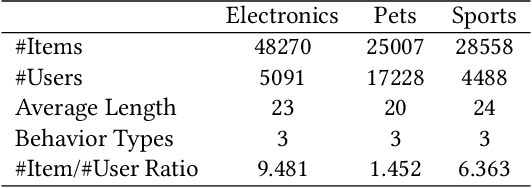
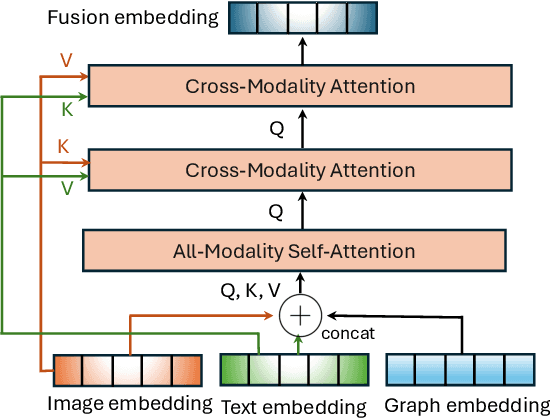

Abstract:Integrating diverse data modalities is crucial for enhancing the performance of personalized recommendation systems. Traditional models, which often rely on singular data sources, lack the depth needed to accurately capture the multifaceted nature of item features and user behaviors. This paper introduces a novel framework for multi-behavior recommendations, leveraging the fusion of triple-modality, which is visual, textual, and graph data through alignment with large language models (LLMs). By incorporating visual information, we capture contextual and aesthetic item characteristics; textual data provides insights into user interests and item features in detail; and graph data elucidates relationships within the item-behavior heterogeneous graphs. Our proposed model called Triple Modality Fusion (TMF) utilizes the power of LLMs to align and integrate these three modalities, achieving a comprehensive representation of user behaviors. The LLM models the user's interactions including behaviors and item features in natural languages. Initially, the LLM is warmed up using only natural language-based prompts. We then devise the modality fusion module based on cross-attention and self-attention mechanisms to integrate different modalities from other models into the same embedding space and incorporate them into an LLM. Extensive experiments demonstrate the effectiveness of our approach in improving recommendation accuracy. Further ablation studies validate the effectiveness of our model design and benefits of the TMF.
 Add to Chrome
Add to Chrome Add to Firefox
Add to Firefox Add to Edge
Add to Edge